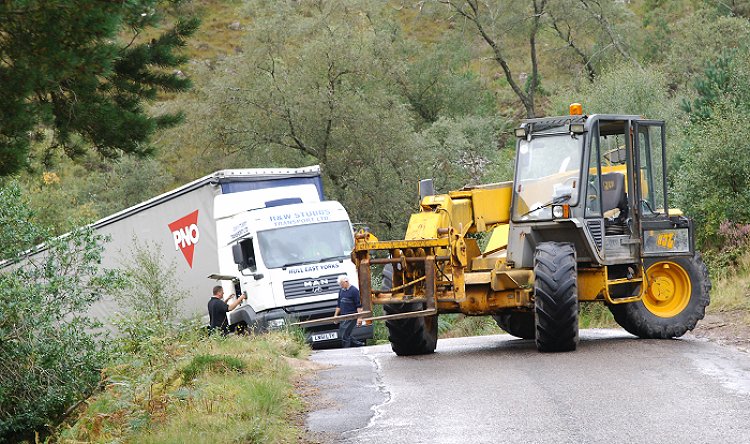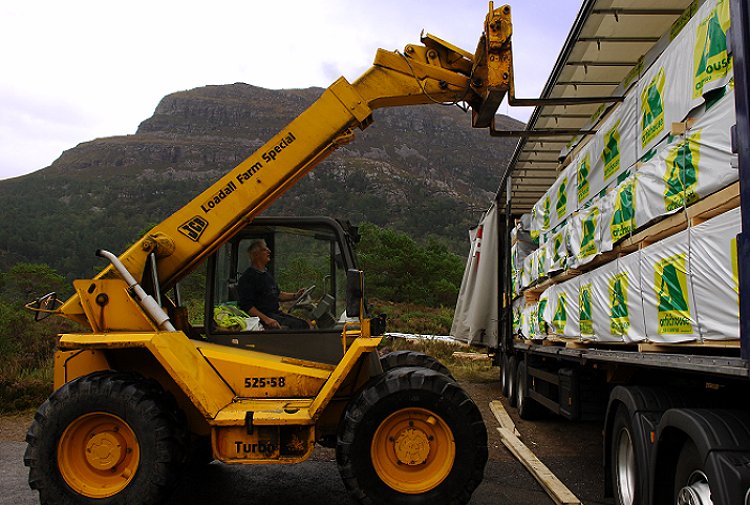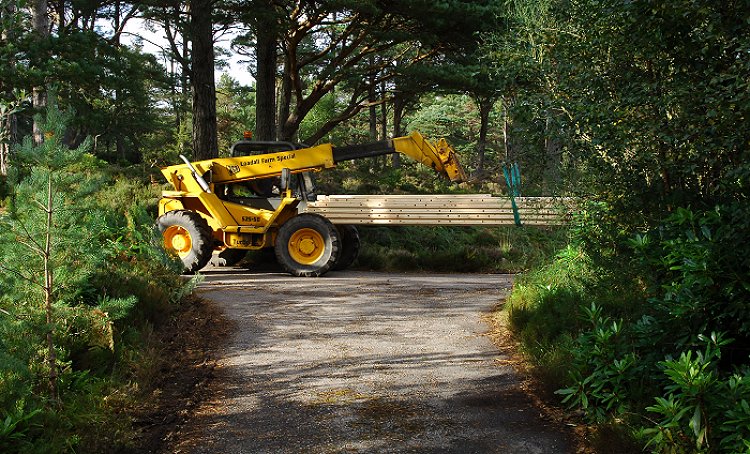|
AUG
05 The
move from demolition to finished foundations (photos below) looks easy
doesn't it?
..before
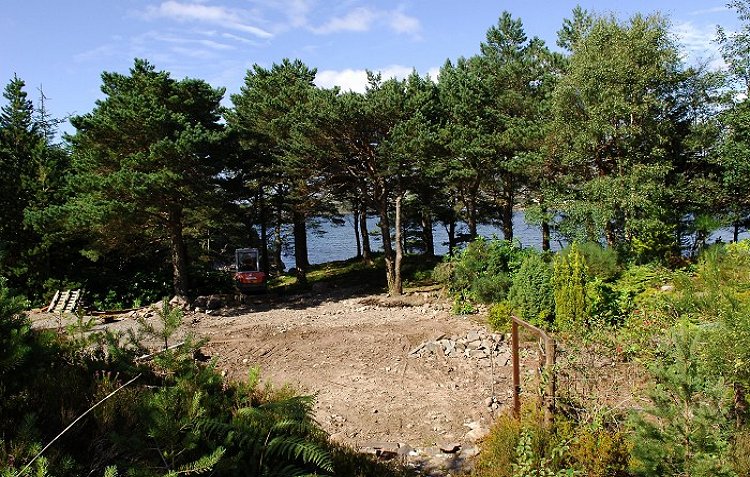
..during
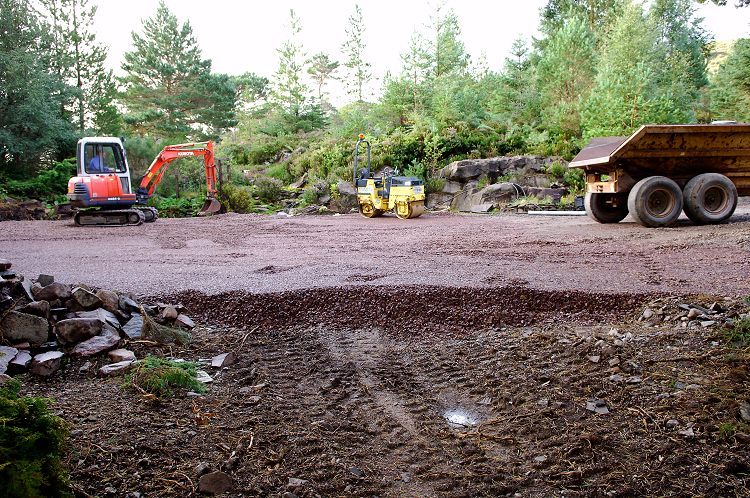
..after.
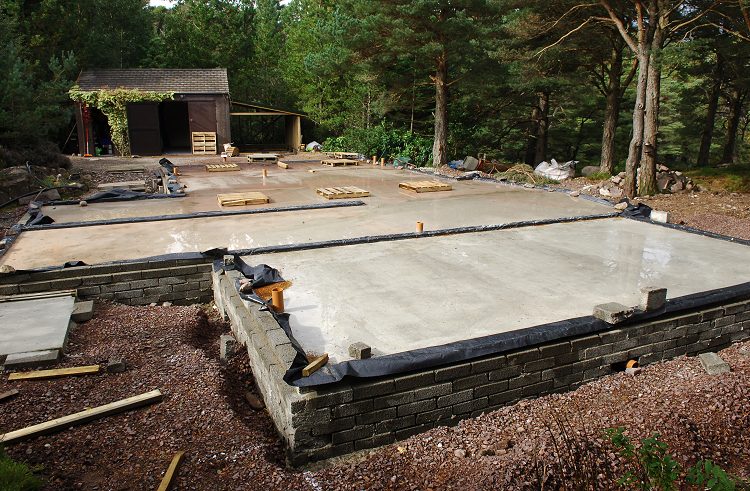
Actually,
It wasn't easy. At all. In the slightest.
I
found out many things during this time. Principally:
- NEVER
try and get a Structural Engineer in the Highlands of Scotland to
do anything other than sit at a desk and not answer
a phone or an e mail.
- Get
a builder that will work on a Sunday.
- Add
30% to every estimate.
- The
date you set for the absolute latest that the job has to be
completed should be at least five weeks before it needs to be.
- Ground
that looks completely flat is in fact sloped.
- If
you send anything to a quantity surveyor by post - it never arrives.
SEPT
05
And then there were the 60 metre deep bore holes for the ground source
heat pump to be dug and pressure tested. This took 3 days, cost as much
as a decent family hatchback and made a LOT of noise.
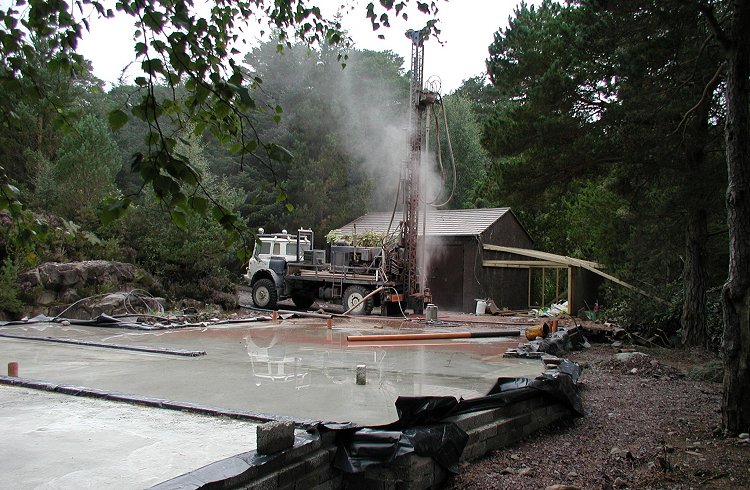
(Techie
bit: skip if you know or are not interested)
A quick word on Ground source heating : Outdoor temperatures fluctuate
with the changing seasons but underground temperatures don't.
Below the earth's surface, temperatures remain relatively constant
year-round. A geothermal system, which typically consists of an
indoor unit and a buried earth loop, capitalizes on these constant
temperatures to provide "free" energy. In winter, fluid circulating
through the system's earth loop absorbs stored heat and carries
it indoors. The indoor unit compresses the heat to a higher temperature
and distributes it throughout the building. In summer, the system
reverses, pulling heat from the building, carrying it through
the earth loop and depositing it in the cooler earth. Unlike ordinary
heating systems, geothermal systems do not burn fossil fuel to
generate heat; they simply transfer heat to and from the earth
to provide a more efficient and environmentally friendly method
of heating and cooling. Typically, electric power is used only
to operate the unit's fan, compressor and pump. The system (along
with solar panels on the south facing roof) is predicted to reduce
heating costs by over £1000 per year on this build and reduce
carbon emissions by roughly 4.5 tons. I organised the system through
GeoHeat  and
the underfloor heating system with integrated solar panels through
Chelmer Heating
and
the underfloor heating system with integrated solar panels through
Chelmer Heating
 |
|
|
SEPT
05
Back
to the story: ...but the problems designing and constructing the foundations
and getting bore holes drilled were made to look easy by trying to get
40 tons of wood and two articulated lorries to negotiate the sharp uphill
bends on a greasy single tack road that led
to the site.
The
first lorry failed miserably, so we had to close the road and get a
local hero with his fork lift to give the lorry a tow. And it JUST made
it up the hill on the third attempt.
|



